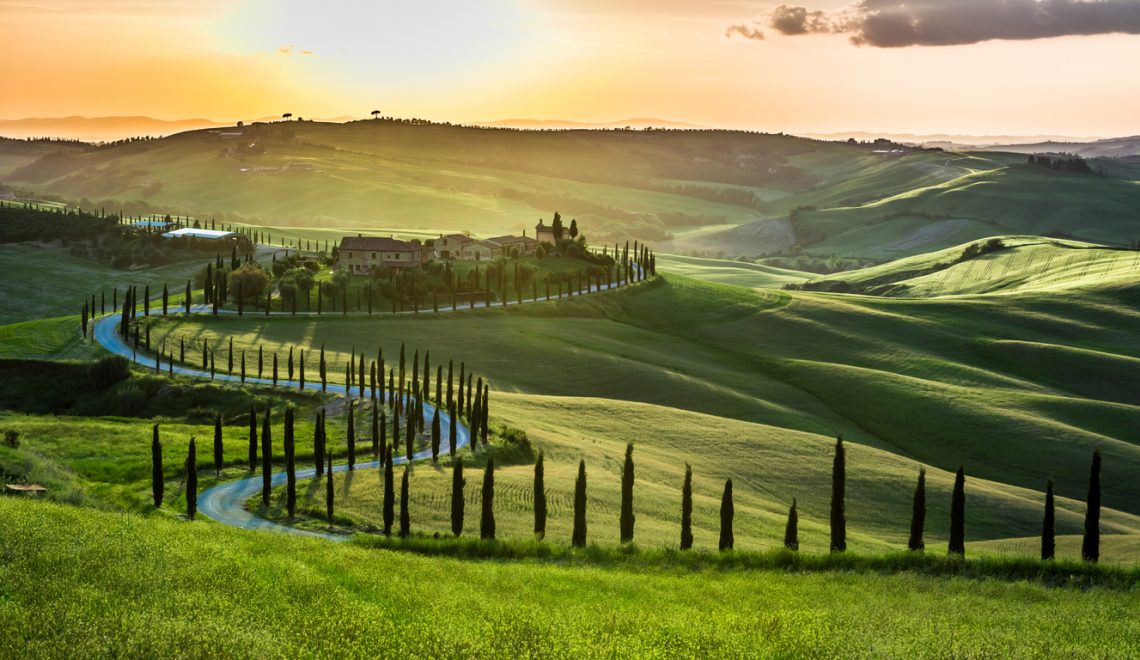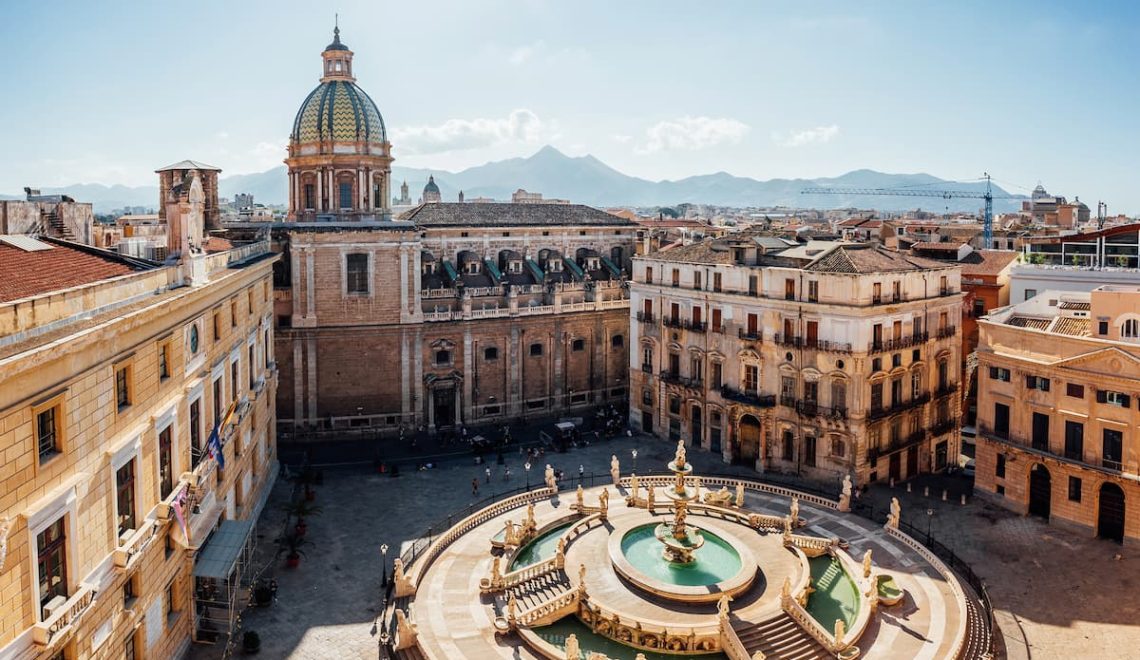
From the labyrinthine canals of Venice to the ancient ruins of Pompeii, this comprehensive guide transports readers across Italy’s diverse landscapes, uncovering the jewels of Northern, Central, and Southern Italy, as well as its off-the-beaten-path gems.
Italy’s Timeless Charm and Iconic Landmarks
Italy, a country woven with history, culture, and an innate charm, beckons travellers from around the world. Known for its rich heritage, Italy is home to some of the most iconic landmarks on the globe. From the floating city of Venice to the ancient ruins of Pompeii, Italy offers a kaleidoscope of experiences that encapsulate its timeless appeal.
- Northern Italy’s Jewels
- The Heart of Italy – Central Landmarks
- Southern Italy’s Hidden Treasures
- Italy’s Off-the-Beaten-Path Gems
Northern Italy’s Jewels
The Floating City – Venice
Venice, a labyrinth of canals and historic architecture, stands as a testament to Italy’s ingenuity and romance. The city, built on water, offers an unparalleled experience with its gondolas and picturesque bridges and museums
. 
The Milan Cathedral and The Galleria Vittorio Emanuele II
Milan, Italy’s fashion capital, is not only about contemporary glamour. The Gothic Milan Cathedral and the Galleria Vittorio Emanuele II, one of the world’s oldest shopping malls, represent the city’s architectural grandeur.
Juliet’s Balcony and the Verona Arena
In Verona, Juliet’s Balcony calls out to the romantics, while the Verona Arena, an ancient amphitheatre, showcases Italy’s historical depth. This iconic spot, part of the 14th-century house said to have belonged to the Capulet family, draws romantics and literature enthusiasts from across the globe. The balcony overlooks a picturesque courtyard where visitors often leave notes of love. Not far from Juliet’s house lies the Verona Arena, an ancient Roman amphitheatre that is remarkably well-preserved. Built in the 1st century AD, it is one of the best examples of Roman engineering and architecture that still serves its original purpose. Today, it is a prestigious venue for large-scale opera performances, hosting thousands of spectators in its grand stands.
Travel from and to Verona with incredible offers from 7,9 €

© Flavio Ciafaroni via Flickr
The Heart of Italy – Central Landmarks
The Colosseum, Roman Forum, and Vatican City
In Rome, the Colosseum stands as a symbol of the Eternal City’s imperial might and architectural prowess. This ancient amphitheatre, where gladiators once battled, is a marvel of ancient engineering and a poignant reminder of Rome’s history of spectacle and power. A short walk from the Colosseum is the Roman Forum, once the epicentre of Roman public life. This sprawling complex of ancient ruins was the site of triumphal processions, elections, public speeches, and criminal trials. It offers an evocative glimpse into the heart of ancient Rome. Vatican City, an independent city-state enclaved within Rome, is the spiritual and administrative centre of the Roman Catholic Church. It’s home to some of the world’s most treasured art and architecture. The Vatican Museums house an immense collection of art and artefacts, including the renowned Sistine Chapel, with its ceiling painted by Michelangelo.
The Duomo, Uffizi Gallery, and Ponte Vecchio
Florence, the cradle of the Renaissance, boasts the magnificent Duomo, the art-rich Uffizi Gallery, and the charming Ponte Vecchio bridge, symbols of its artistic legacy. 
Piazza dei Miracoli and the Leaning Tower in Pisa
The “Piazza dei Miracoli” and its crowning glory, the Leaning Tower of Pisa, are architectural wonders that continue to fascinate visitors. However, there is much more to see in this city which is just 1 hour from Florence. Find out what there is to see in Pisa with our dedicated guide.
Visit the beauties of Tuscany with Italo
Southern Italy’s Hidden Treasures
The Ancient Ruins of Pompeii and the Vibrant Streets of Naples
The ruins of Pompeii offer a haunting yet fascinating journey back in time. Buried under a thick layer of volcanic ash and pumice after the catastrophic eruption of Mount Vesuvius in 79 AD, Pompeii was lost for centuries before its rediscovery. Today, it stands as one of the most significant proofs of Roman civilization, providing unparalleled insights into the daily life of the ancient world. Visitors can stroll through the ancient streets, explore well-preserved houses, forums, and temples, and see the poignant plaster casts of the victims of the eruption. 
The Amalfi Coast’s
Positano, Amalfi, and Ravello: The Amalfi Coast, with its breathtaking views and charming towns like Positano, Amalfi, and Ravello, epitomizes the scenic beauty of Italy’s coastline.
Italy’s Off-the-Beaten-Path Gems
The Valley of the Temples and Palermo’s Norman Palace in Sicily
Sicily, an island rich in history and culture, is home to the Valley of the Temples, one of the most significant archaeological sites in the world. This UNESCO World Heritage site in Agrigento is renowned for its well-preserved ancient Greek temples, each telling a story of the island’s Hellenic past. Among these, the Temple of Concordia stands out for its majestic Doric columns and remarkable state of preservation. In contrast to the ancient splendour of the Valley of the Temples, Palermo’s Norman Palace, or Palazzo dei Normanni, is a testament to the island’s medieval history. This royal palace of the Kings of Sicily, adorned with exquisite mosaics and elegant architecture, showcases a blend of Norman, Arab, and Byzantine influences. The Palatine Chapel within the palace, with its breathtaking mosaics and intricate woodwork, is a highlight not to be missed.
Visit the beauties of Sicily with Italo

Sardinia’s Mysterious Nuraghes
Sardinia’s Nuraghes, mysterious stone structures, tell stories of ancient civilizations. Sardinia, an island with a unique and ancient culture, is dotted with mysterious stone structures known as Nuraghes. These Bronze Age megalithic edifices, built between 1900 and 730 BCE, are exclusive to the island and reflect a unique form of prehistoric architecture. The Nuraghe of Barumini, a UNESCO World Heritage site, is among the most famous and well-preserved. These circular defensive structures, often complex and consisting of several towers, provide a fascinating insight into the island’s prehistoric inhabitants and their way of life.
The Trulli Houses of Alberobello in Apulia
In Puglia, the Trulli houses of Alberobello, with their conical roofs, are a unique architectural phenomenon.  The Trulli houses of Alberobello are a remarkable example of traditional Apulian dry stone hutting. Unique to the Itria Valley in Puglia, these whimsical structures with their conical roofs are a delightful sight. Made without mortar, these huts were historically constructed in this way to allow for quick dismantling – a tactic used by the peasant inhabitants to evade taxes on new settlements under the Kingdom of Naples. Today, these Trulli are a UNESCO World Heritage site and symbolise a fascinating part of Southern Italy’s rural past. Alberobello’s Trulli, with their white-tipped conical roofs, often adorned with symbolic Christian and pagan markings, offer a glimpse into a traditional way of life that has been preserved over the centuries.
The Trulli houses of Alberobello are a remarkable example of traditional Apulian dry stone hutting. Unique to the Itria Valley in Puglia, these whimsical structures with their conical roofs are a delightful sight. Made without mortar, these huts were historically constructed in this way to allow for quick dismantling – a tactic used by the peasant inhabitants to evade taxes on new settlements under the Kingdom of Naples. Today, these Trulli are a UNESCO World Heritage site and symbolise a fascinating part of Southern Italy’s rural past. Alberobello’s Trulli, with their white-tipped conical roofs, often adorned with symbolic Christian and pagan markings, offer a glimpse into a traditional way of life that has been preserved over the centuries.



